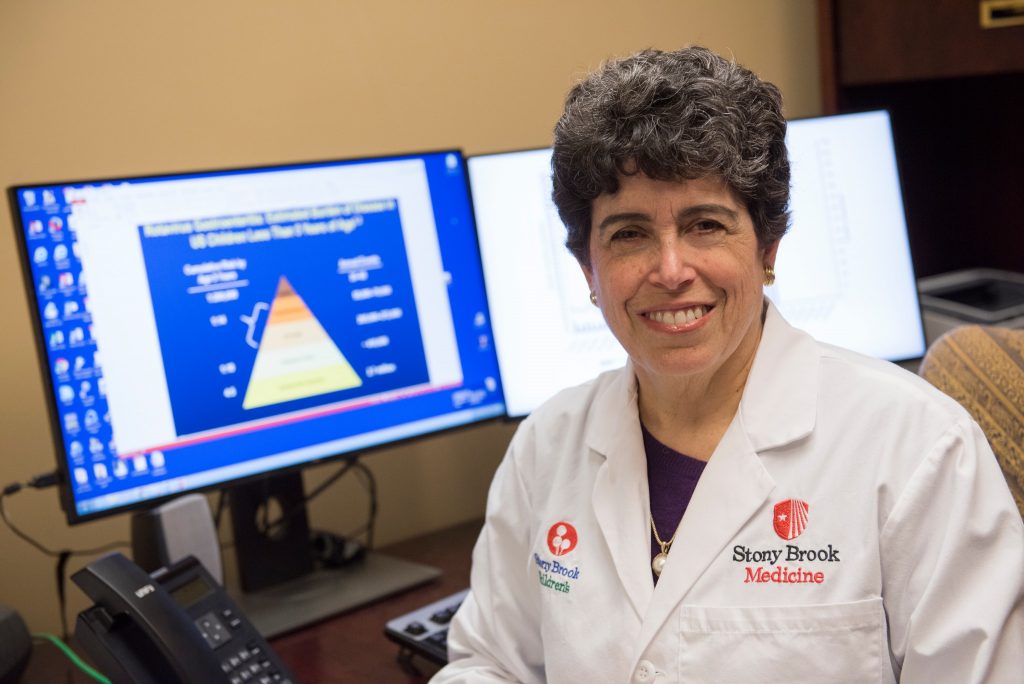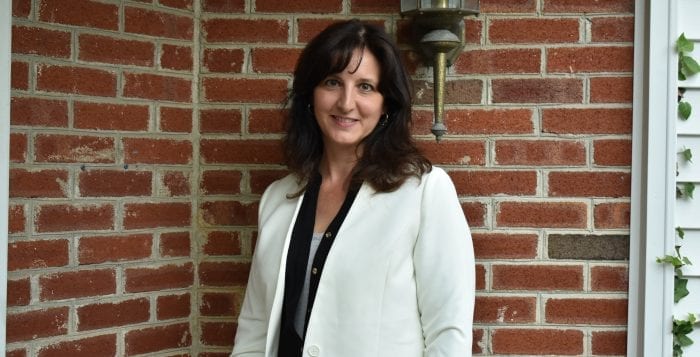By Lynn Hallarman
Whenever Steve Englebright, 5th District county legislator (D-Setauket) and geologist, is asked about the East Beach bluff stabilization project, chances are he will start by explaining the big picture of bluff erosion on the North Shore of Long Island.
“We [Port Jefferson] are at the doorstep of the greatest amount of erosion of the entirety of the North Shore,” he said to a rapt audience of about 40 people at the Port Jefferson Civic Association meeting Oct. 14.
Englebright spent 40 minutes in an educational deep dive about the shoreline’s composition and history, focusing on how erosion along the 50 miles of the North Shore impacts the village-owned sliver of bluff at the East Beach.
The meeting represents another moment in the ongoing debate among residents and village officials about the project strategies and costs. Mayor Lauren Sheprow, trustee Xena Ugrinsky and several members of the Port Jefferson Citizens Commission on Erosion were present.
Using a whiteboard and marker, Englebright diagrammed how thousands of years of erosion have shaped and reshaped the shoreline. The audience gasped as he recounted the 1904 Broken Ground Slide, in which almost a mile of land just east of Northport let loose and fell into the Long Island Sound in one day.
“The reason I want you to get the big picture is that this is a very unstable shoreline. The basic premise of stabilizing it for a given property [the country club] is mission impossible. Because any given little property is part of a larger dynamic,” he said.
Englebright explained that erosion of the North Shore is accelerating because of our overheating oceans, producing more powerful and frequent tropical storms, further destabilizing the area. “[Bluffs] are not cemented together, so it doesn’t take much to disturb them — like a hurricane. They come apart easily,” he said.
“The county club was unwisely [decades ago] placed too close to the bluff edge,” he said. In the long term, more than just tennis courts will be in harm’s way.”
“What does this all mean?”
“We have to ask some serious questions when we get involved in spending millions of dollars,” he said.
Weighing the pros and cons
Englebright shifted the conversation from a big picture discussion about coastal erosion to a conversation about the project’s immediate and long-term goals.
“I think we’ve already spent something like $5 million in a community of 8,500 people. Do the math: It’s already a significant investment, much of which has already been at least partially compromised in just a couple of seasons,” he said.
He added: “It’s really a cost-benefit analysis that has to be made.”
Cost update
Village treasurer, Stephen Gaffga, told TBR News Media in a follow-up phone interview that the costs for Phase 1 of the East Beach Bluff Stabilization project — which included the construction of a large rigid wall already installed at the base and bluff face plantings — have reached $5.3 million.
Additional costs of $640,000 related to engineering designs and administration bring the total cost to $6 million for Phase 1.
According to the treasurer, the village is currently negotiating with the company that installed the Phase 1 bluff face plantings to determine coverage of the costs for the work destroyed during last winter’s storms.
Phase 2, the upper wall project — which includes installing a rigid wall with a steel plate at the crest of the bluff — will be partially funded by federal taxpayer dollars as a $3.75 million FEMA grant. Village officials announced final federal approval for this grant money last month. Local taxpayer dollars will fund the remaining Phase 2 expenses.
According to the treasurer, village officials will better understand the total costs of Phase 2 once the village bids for the work of constructing the upper wall.
Village trustees approved a $10 million bond resolution in 2021 to fund the project (phases 1 and 2) overall. To date, $5.2 million of the $10 million approved has been borrowed.
Additional potential costs to date include a possible drainage project at the bluff’s crest, and additional expenses related to repairing recent storm damage to the bluff face.
Sheprow told TBR that the village is exploring possible additional grant funding to supplement identified additional costs.
Relocating Port Jeff Country Club
“The bad news is that there’s no single solution,” Englebright said. “The good news is that you [the village] own 178 acres due to the wise investment by the mayor’s father, former mayor Harold Sheprow, made in [1978].”
“That gives you the ability to relocate the building,” he added, referring to Port Jefferson Country Club.
Englebright suggested that project options be costed out over time and compared before more is done. He would like to see more than engineering expertise weigh into decisions about the project. “Engineers will always tell you they can build anything,” he said.
He envisions a retreat scenario as done in phases or possibly all at once. “But those decisions have to be costed out,” he said.
Englebright ended his lecture by commending the current mayor. “I can tell you this, I have met with the mayor and she is doing her homework,” he said.
The next civic association meeting will be held Nov. 11 at 6.30 p.m. at the Port Jefferson Free Library.

























